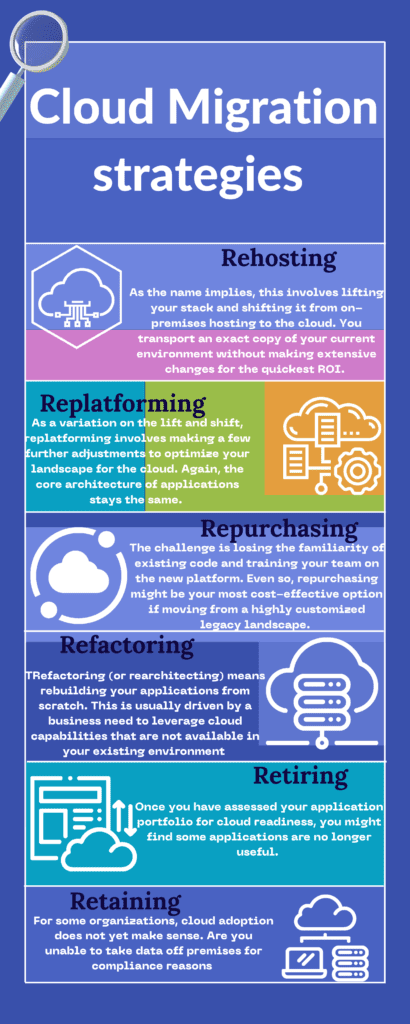Most organizations have either moved most of their operations to the cloud or are planning to move their applications to a public cloud. Are you planning to do so as well? If so, you are among the 50% of companies planning to move to an off-center system.
However, before a business moves to a cloud-based solution, it is essential that they understand the entire process and how things need to execute. In this article, we have explained the entire process in detail that can be helpful for businesses in cloud migration.
Assessment
The first step in the strategy is to evaluate all business requirements, as cloud providers do not follow the traditional strategies like “one size fits all.” Following are some of the factors you should consider during the evaluation phase:
- Check if your business is suitable for the cloud platform you have chosen.
- Analyze the type of workloads you want to move to the cloud.
- The cost of moving to the cloud is often not easy to calculate. Therefore, look out for additional costs depending on the geographical location, bandwidth consumed, backup and storage requirements, etc.
- Check if you find any gaps in the platform and discuss viable plans with the potential cloud providers to fill those gaps.
- Often, companies get used to specific tools that cannot adopt in the cloud environment. It is essential to familiarize yourself with replacing these tools with ones supported by the cloud environment in such situations.

Planning
Once you have addressed all the issues in the assessment phase and finally decided on a cloud platform, the next step is to plan the cloud migration. Aspects to be considered in this phase are:
- Analysis of the various applications, cloud environments, and the type of workload to be migrated.
- Reviewing the architecture and topology of the application.
- Predicting performance issues related to cloud migration.
- Review of various hybrid integration plans.
- Identifying early adopters and seeking their advice for a smooth transition to the cloud.
- Reviewing the Single Sign-On (SSO) mechanisms provided by the cloud provider and taking this first step in any project to use the cloud service.
- Ensure the team is comfortable with the services by tailoring onboarding materials to help employees become familiar with the cloud.
- Analyze how the service can be operated after migration.
- Plan the entire process of making payments to the cloud provider.
- Reviewing and implementing a small project and conducting test runs before a complete migration to verify that the service addresses all of the above concerns.
Migration
After proper planning, it seems like the actual migration should be a simple task, but that is not the case. The actual migration to the cloud can bring many surprises, so you should exercise extreme caution during this process. Some of the essential points you need to consider include:
- Deciding how to distribute the applications and data in the cloud environment.
- Checking if there are any security measures to be taken during the transfer process.
- Carefully migrating virtual machines to the cloud environment.
- Migrate all critical data and other critical applications.
- Recover metadata by setting up supporting configurations for your cloud target.
Validation
After the whole cloud migration process is completed, it is essential to check and verify all the applications to know if they are working well. Some of the most important things that need to be verified are.
- Verifying that the migrated application is reachable and the user can access it.
- Verifying that all the required data has been transferred to the cloud environment.
- Verify that the management tools can access the applications and data in the cloud environment.









